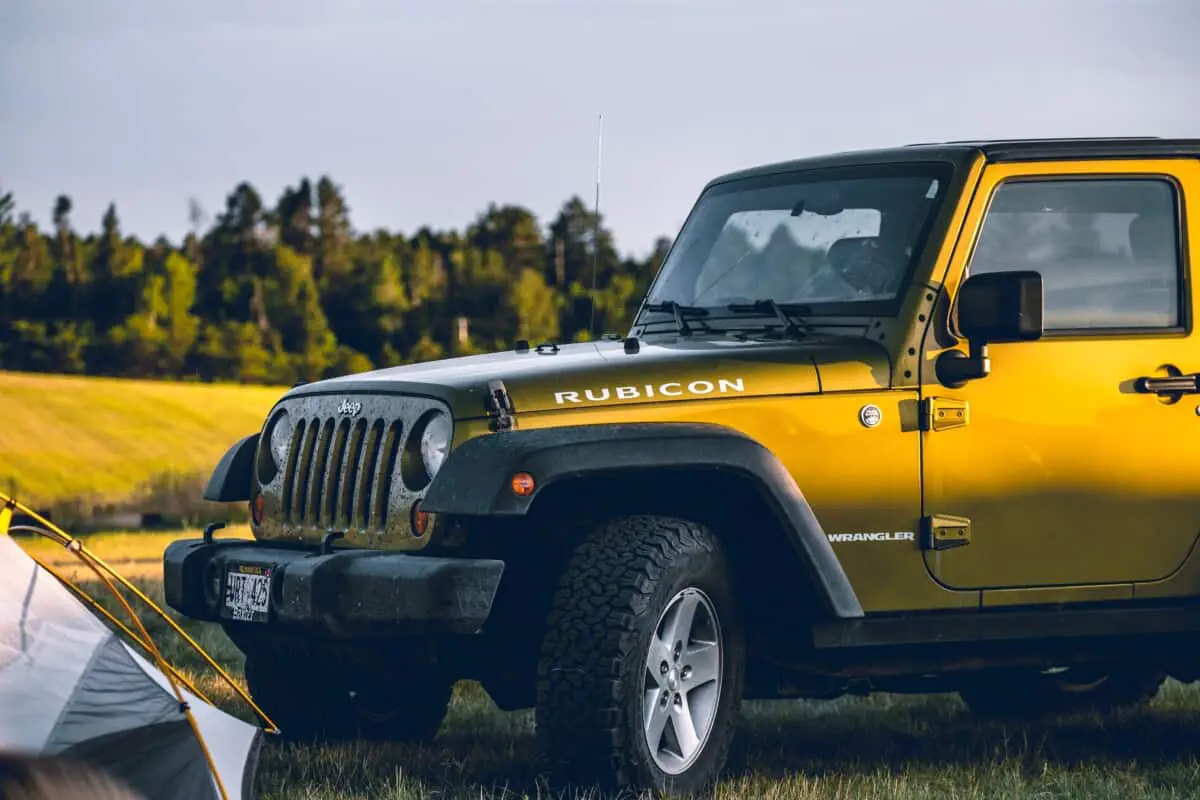When it comes to buying a new Jeep, things can get expensive very quickly. It can be much more economical to buy a used Jeep. But what should you consider when buying a used Jeep?
Buying a used car requires an in-depth inspection of the vehicle you are hoping to purchase. Here at Siberian 4×4, we have compiled a buyer’s checklist for you to easily identify where potential hidden problems lie so that you can make the most informed purchase.
There is no easy way to decide if a used Jeep is right for you. But in this post, we break down what you should look at before buying used. Used Jeeps can be a mixed bag, especially if they have not been cared for properly. This post will discuss 20 different things to look out for when considering a used Jeep.
Know Your Needs To Pick the Right Jeep Model For You
There are quite a few Jeep models available nowadays. You need to know which models you are most interested in to start narrowing your search. Keep in mind that not all models rank the same even before you consider their used counterparts.
The following is a chart highlighting the advantages and disadvantages of popular Jeep models that have ranked well as a used car buy:
| Type of Jeep | Best Reason To Buy | Pros | Cons |
|---|---|---|---|
| Jeep Cherokee | Known for its strong unibody construction Best compact crossover Large aftermarket support (1984 – 2001) | Iconic straight six 4.0-liter engine (1984 – 2001) NY Daily News Best used SUV for under $10,000 | Older models tend to be very rusty, especially near the ocean |
| Jeep Wrangler | Most iconic of the Jeep bodies Largest aftermarket support in industry Best for its off-roading capabilities | Holds value very well Easy to work on Iconic 4.0-liter straight six engine option | Low fuel efficiency Suspension and frame may not be in the best condition if used extensively for off-roading |
| Jeep Grand Cherokee | Perfect mid-size SUV Various models with two high-performance editions for all-around driving | Voted one of the best off-road SUVs by the US News & World Report in 2015 Combines Luxury w/ capability Rare Eco-Diesel available | Used models do not commonly have all the bells and whistles you can get with a new car Older models are not as fuel-efficient |
| Jeep Gladiator | Based on the Jeep Wrangler’s design Comes with the flexibility of a pickup truck and the look, feel, and luxury of a Jeep | Combines Jeep luxury with a pickup truck design The newest models have a hybrid engine available | Some models are very old as the Gladiator was reintroduced in 2020 after 32 out of production Models are commonly rusted out, but you may be able to find one for relatively cheap |
| Jeep Renegade | The smallest vehicle offered in Jeep’s fleet Not manufactured in the United States | Great 4-wheel drive option Flexible capability designed for off-roading and highway or around town driving | Being fairly new means most used versions are still relatively expensive Fully equipped models have high price tags Introduced in 2015 |
You want to take care in choosing the right model for you. If you plan to go hardcore off-roading, you may want to favor looking at Jeep Wranglers, Gladiators, or older Cherokees over the newer Cherokees, Grand Cherokees, or Renegades.
On the flip side, Grand Cherokees, Renegades, and the Jeep Commander can be made into incredible Overlanding vehicles.
Once you know which model is right for you, focus on those vehicles and hone in on the parts of a used vehicle that may be overlooked. Read on to learn about the specific things you need to look for once you have chosen your preferred Jeep model.
How Much Does a Used Jeep Cost?
Price is a very important consideration when buying any used car. You do not want to overpay for a vehicle and then end up having to do tons of repairs as well.
Used Jeep Wranglers average between 14k to 19k dollars. High demand and varying aftermarket work allow Jeep Wranglers to hold value well. Generally, prices go up $1,000 for every year newer the Jeep is. These prices are flexible and below we show things to look for that could lower the price.
With cost, there are four major influences when it comes to used Jeeps:
- Age
- Mileage
- Modifications
- Seller
All of these may impact the price of your used Jeep and knowing a bit of background on these points may be key to you getting a deal.
How Many Miles Are Ok on a Used Jeep?
Mileage on any vehicle can be subjective to what kind of miles they are. For example, are they highway miles, in-town miles, or hard off-roading miles? All this information comes from knowing the seller.
The average mileage a car should have is 10,000 miles per year since the car was manufactured. For example, a car built 14 years ago should, on average, have 140,000 miles. This number can fluctuate higher if the seller performed routine maintenance and/or if the miles were primarily highway miles.
With this information, you can also deduce if the car is priced well. Cars with less than average mileage may be priced higher than a car of the same age with more miles. However, it gets trickier to compare mileage and price when the car is around five years old with way more than 50,000 miles.
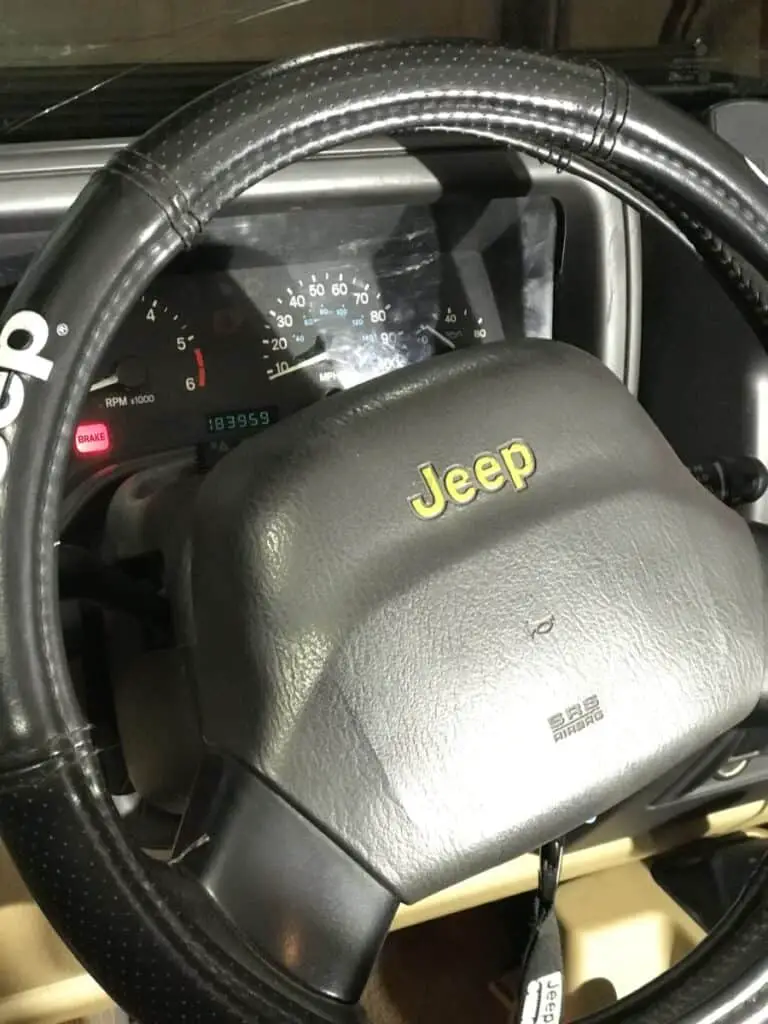
Since mileage has a major influence on the price, this can be one of your quick indicators of whether or not you want to consider the car further.
Word of Caution: Just because the mileage is higher doesn’t mean the vehicle shouldn’t be considered. This is merely an area to negotiate the price. Every single one of the cars in my family has lived well past 200,000 miles with some well into their 400,000-mile range. Maintenance is key.
What Year Is the Model?
The year the used Jeep was made also is a big indicator of price. The older the vehicle is generally, the less expensive it gets. However, with Jeeps having a cult-like following, being customizable, and highly modified, the age of the Jeep sometimes matters a lot less than the overall condition of the car.
Make Sure You Consider the Seller
There are many ways in which you can buy a used car. A private sale can be more expensive and not give you the flexibility of car payments as purchasing from a reputable dealer. Keep in mind no matter who you choose to buy from, and you want to run through the items on our checklist.
The following are possible sellers where you can get your used car from:
- Dealership
- Private seller
- Internet sale
All three of these options have their perks. Choosing a dealership or internet sale may reduce your upfront costs and allow you to purchase a certified pre-owned vehicle. Yet, it is much more common to find some of the older models in a private seller’s collection. And with a private sale, you may wind up having to do some major repairs.
Look for a Jeep with a Rot-Free Undercarriage
The undercarriage or frame is one of the most important parts of any vehicle. A rotting undercarriage can cause a vehicle to fail its inspection. You will not get much use from a vehicle that is not deemed safe to drive on the roads.
The easiest way to check the undercarriage of a Jeep is to get underneath the car. Whether you have access to an automotive lift or not, when checking under your used Jeep, look for the following things:
- New parts – This means things were recently replaced, which is generally a good sign when buying a used car. However, it can also be an indication of heavy use, which may mean the vehicle is more worn down than you think.
- Scratches, dents, and scrapes – Any damage to the undercarriage may be concerning if the vehicle has not been properly cared for. Make sure any damage is cosmetic in nature and not a sign of poor maintenance and care.
- Rust – This is the number one reason to not buy a used car. If the frame is rusted and flaky, it is not a good investment. Replacing a rotted frame is expensive and difficult to do-it-yourself.
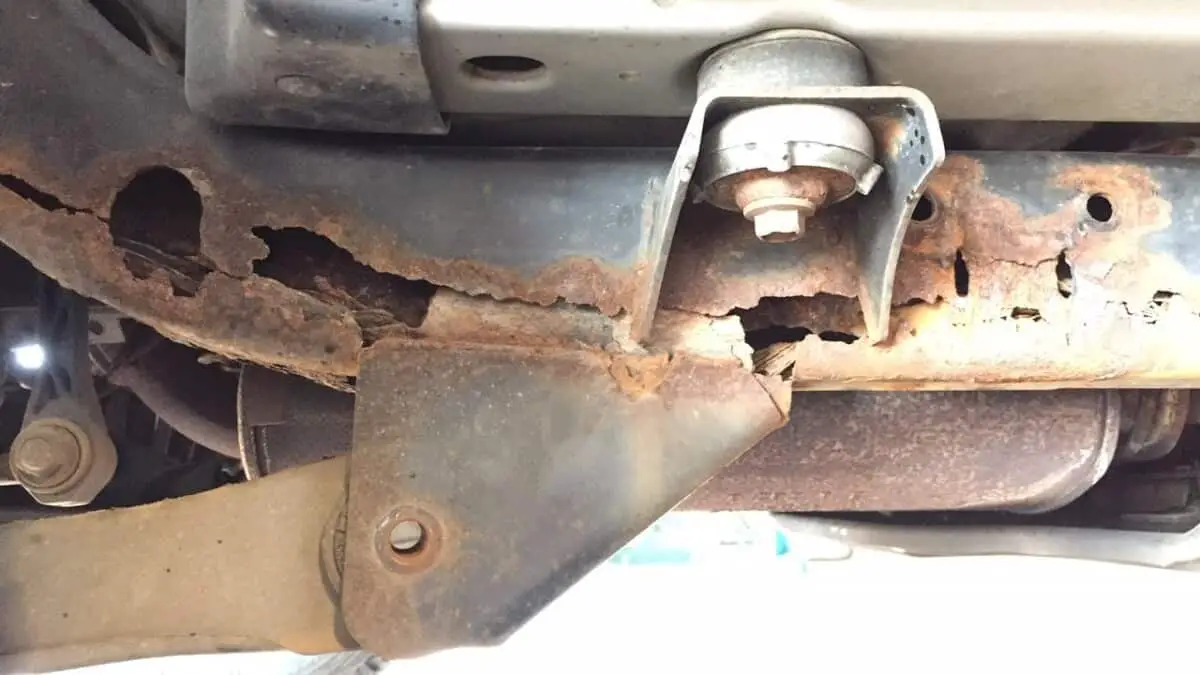
Since Jeeps are known for their off-road performance, the undercarriage can take an unnecessary amount of stress throughout the lifetime of the vehicle. Also, make sure to ask the owner about its off-roading use to get a better sense of how the undercarriage may look.
What Kinds of Modifications Does the Jeep Have?
If you do not know what you are looking for, you may overlook a part that has been incorrectly installed, which may end up having a lasting impact on the drivetrain or the vehicle’s performance.
But you also want to consider whether the used Jeep you are contemplating purchasing can be upgraded and modified to your liking.
Modifications For Off-Roading
If off-roading is a passion, you may like to pursue buying a stock used Jeep that you can modify as modifications are part of the fun of owning a Jeep. Many owners look at the possibility of modifying the vehicle to suit your needs and creating a driving or off-roading experience that is one of a kind.
However, many times these aftermarket modifications are installed in a do-it-yourself fashion. A do-it-yourself mash-up of Jeep and non-Jeep parts can change the vehicle’s integrity in a negative direction.
One of the most important modifications to investigate is the suspension.
Overall Modification Warnings
A poor suspension will impact your overall driving experience and decrease the car’s life if improperly installed. The suspension is one of the keys to having a safe, long-running vehicle. And this is covered more in the next checkpoint!
Even if it is used, a highly modified Jeep is going to cost much more than a stock Jeep. This is because the owner had to pay a large sum of money to have the modifications installed properly and with the best parts.
Additionally, you want to choose your used Jeep wisely, as some models may not have the capability to be upgraded the way you have imagined. And this is an important reason to consider a different used Jeep.
Check the Integrity of the Suspension
You should look to make sure the following parts of your suspension are in good condition:
- Ball joints
- Bolts
- Bushings
- Control arms
- Fittings
If you don’t know how to or what to look for, check our article “How to Service a Jeep Wrangler in 13 Steps” for a good reference.
Also, look out for any welded materials and parts; these should be clean and well done. If the welds on a used Jeep’s modifications are not done well, it can be detrimental to performance and safety.
Many times it may be more worthwhile to purchase a Jeep that is not modified. If you do not plan to go off-roading, a Jeep with modifications is unnecessary. Also, it is much more fun to pick out your own modifications and learn along the way how things should be installed.
Check The Tire Treads
Do not overlook the condition of the tires. This can be a simple item on the checklist to forget, but it can be a major headache in the future. There are a few easy things to spot when looking at your tires that would hint at poor vehicle maintenance, too.
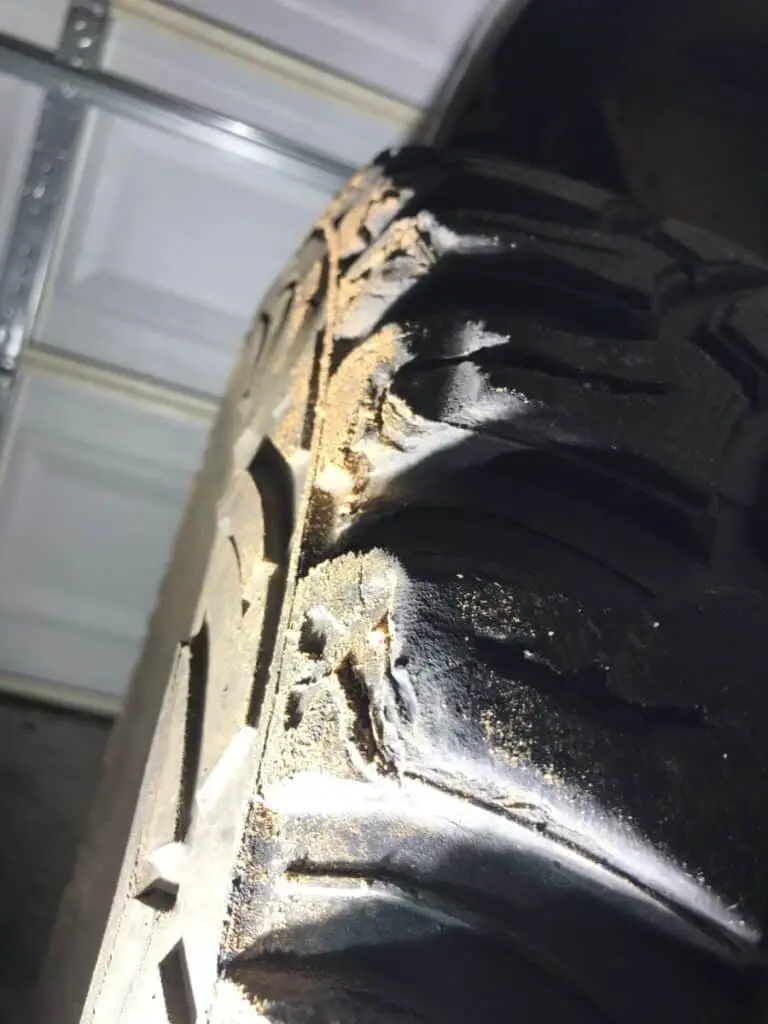
Chunk of Tread Missing from Rock Crawling 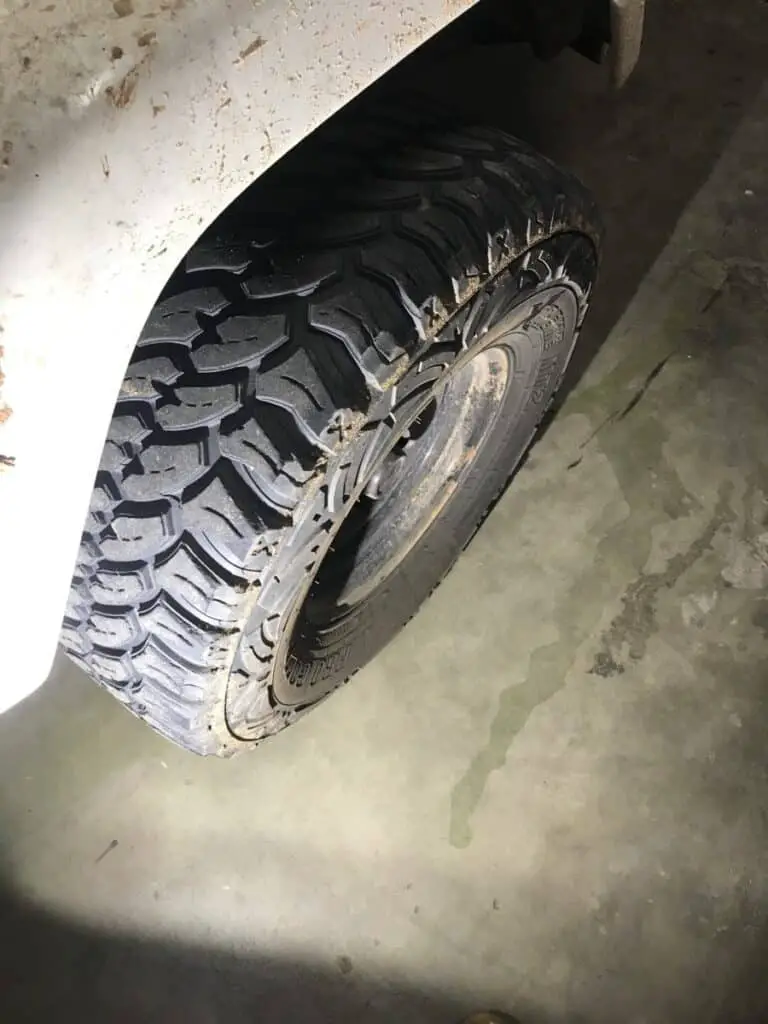
Good Tread Depth and Wear
When purchasing a new, used Jeep, look for the following red flags that may indicate larger issues with the vehicle:
- Low treads – This means the tires have not been replaced recently, and it could fall to you to replace them for ultimate safety when driving, especially in all-weather conditions
- Uneven wearing on the edges or middle of the tires – This could mean your Jeep’s alignment is off and could cause problems in the future if not repaired.
- Uneven wearing on the front and back tires – This indicates the tires were not rotated properly, and the weight of your vehicle has not been distributed evenly to all four tires.
After all those checks, if everything looks good, move on to the next item. And if you are willing to shell out additional money after the purchase of new tires if they are in poor condition, move on to the next item, as well.
Check for Rust Inside and Outside of the Vehicle
Many circumstances can cause a vehicle to rust. Many times, with a used car, it is very common to see some rusting on the vehicle. But there are some red flags to watch out for when you are searching for your new, used Jeep.
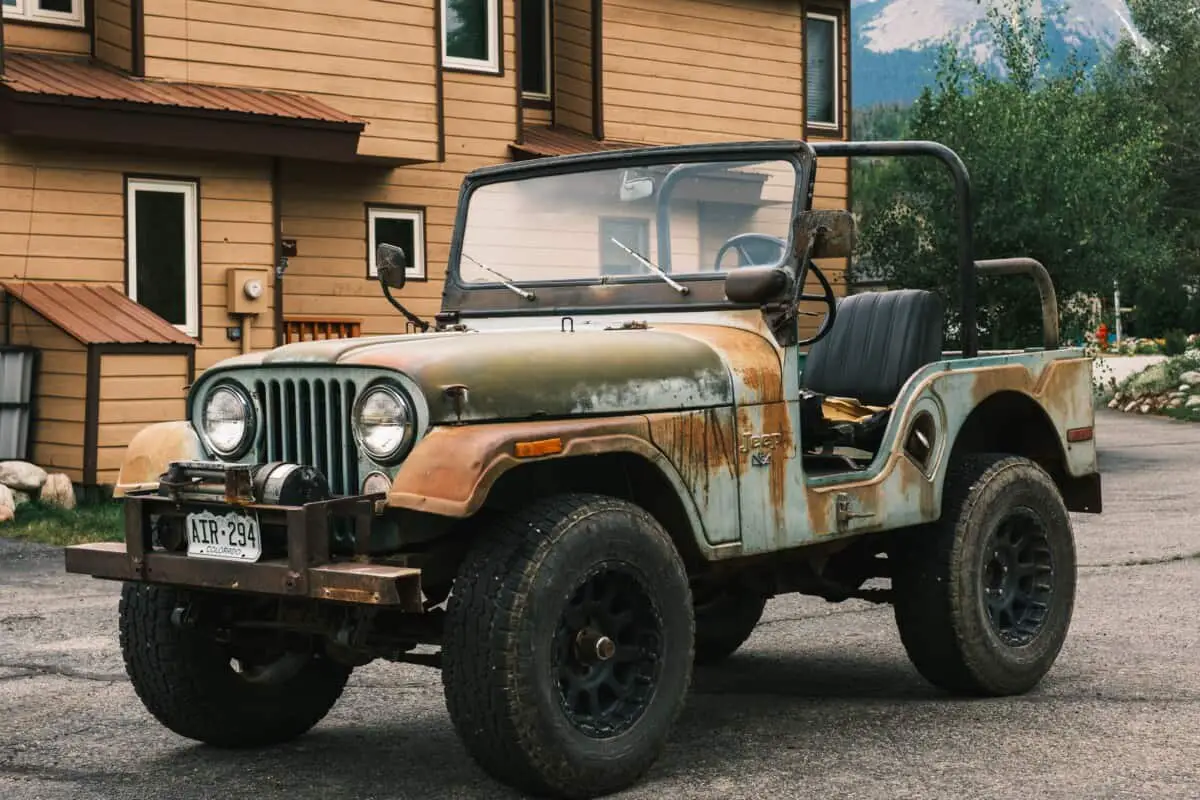
Consider the following questions when looking at a Jeep with rust:
- How often has it gone off-roading? – If the previous owner was an avid off-roader but did not take care of the vehicle, this is a red flag. While off-roading, your Jeep can be exposed to deep water and thick mud. If the vehicle is not cared for properly after exposure to these elements, it can cause irreparable rust damage.
- Where are most of the damage? – The rust damage, when minimal, may be seen around the wheel wells and on the body or frame. If you notice rust damage inside of the vehicle, on the cabin floors or in the trunk, and around the exhaust, you may be dealing with a much larger issue. Rust inside the vehicle may indicate a roof leak.
- How does the rust hold up when poked, prodded, and jostled? – If you can disturb the rust spots and there is flaking, and it disintegrates easily, you are in trouble. Do not consider this used Jeep any further.
Rust can be a major safety issue and may cause problems when inspection time comes. Repairs of this nature tend to be costly and labor-intensive. If you notice any severe rust, it is best to choose a different vehicle. But if this checkpoint is passed, move on to looking under the hood!
Make Sure Hoses Are Intact, And There Is No Leaking
Do not go looking for a new car in the rain. It can be very difficult to identify leaking when the ground is wet from rain or snow.
You want to be able to check for leaks without any hiccups. In addition to selecting a leak-free used Jeep, you want to avoid any issues with the hoses.
If you can get under the hood, look for the following issues with the engine:
- Broken seals
- Coolant leakage
- Cracked hoses
- Dripping from the oil pan
- Engine oil leaks
Any of the above problems can be a headache to deal with and an additional cost you do not want to be responsible for. If you notice these items, you may be able to negotiate for a better deal with the seller. If you can’t get a better deal, it is most likely time to move on and look for a different used Jeep.
Ask Seller About General Maintenance And Upkeep Records
When you have inspected the body of the vehicle, and everything looks in good condition, you want to then address the regular maintenance and care the car received. Ask the previous owner about the general service the car has received during its lifetime.
Look for the following things when checking into items that should be regularly maintained:
- Air filter
- Coolant levels
- Oil levels
Ask to see all documentation and records the owner has on maintenance. If the fluids are not properly maintained, this is a sign of poor maintenance elsewhere on the car.
Also, ask about oil consumption; some Jeeps, such as those with a 3.8-liter engine, are notorious for burning through oil very quickly. If oil consumption is high, you may want to consider a different vehicle.
Take The Jeep For A Test Drive
After you have moved through checking the exterior of the vehicle, it is time to take the used Jeep for a test drive. If the owner is skeptical about letting you test drive the car, this is another bad sign. You should never have any hang-ups when asking about a test drive.
When on a test drive, there are three main things to check:
- Acceleration
- Braking
- Overall performance
Read on for tips and tricks you can use when testing out these features of your used Jeep.
Listen to the Engine
When you start up the used Jeep, listen for any noises that seem out of the ordinary. A properly maintained Jeep should not be producing sounds outside of its characteristic low ticking of the engine.
The following are sounds to listen for when you start up the engine:
- Stuttering or misfiring while idle
- Irregular noises during warm-up
- Any other loud banging or rattling
These noises are considered out of the ordinary and may indicate a larger problem. If you notice strange noises during the test drive, it is best to consider buying a different used Jeep as you may run into serious problems in the future.
Does the Vehicle Accelerate Normally?
By checking how well a Jeep accelerates during a test drive, you may be able to determine other potential problems. Acceleration and transmission performance go hand-in-hand. By testing the car’s acceleration, you get an insight into how well the transmission performs, too.
Use the following steps when checking the acceleration on a used Jeep:
- Press on the gas. If the car is pushed to shift at high RPMs, you should take note of its performance.
- Check the capabilities of the transmission. Basically, after you step on the gas and see how long it takes the car to pick up speed, you also want to consider how well the transmission shifted. If you notice choppy shifting, this could point to an issue with the transmission.
How well your transmission performs, and the vehicle accelerates can also give you insight into the average miles per gallon your used Jeep may get. A transmission that is not performing at its peak will lower the car’s overall mile per gallon rating and put added strain on the engine.
Are the Brakes in Good Condition?
When on your test drive, it is important to test out the brakes. In addition to any normal braking you do while out driving, you want to test the brakes under stressed conditions. This means you should hard brake and see how the vehicle responds.
Listen and watch for the following things when you are testing the brakes on a used Jeep:
- Listen for squeaking and grinding – This could mean you will need to replace the brake pads.
- Look for slight directional changes – If you brake hard and the vehicle is pulled in one direction, you may need to replace the rotors, or there could be a problem with the suspension.
If you are savvy with vehicles, don’t be afraid to ask the owner if you can take off the tires and really get a good look at everything. Get your hands dirty and inspect the brake system well.
Brake pads should have at least 1/8” of pad on them. Check out these old vs new brake pads.
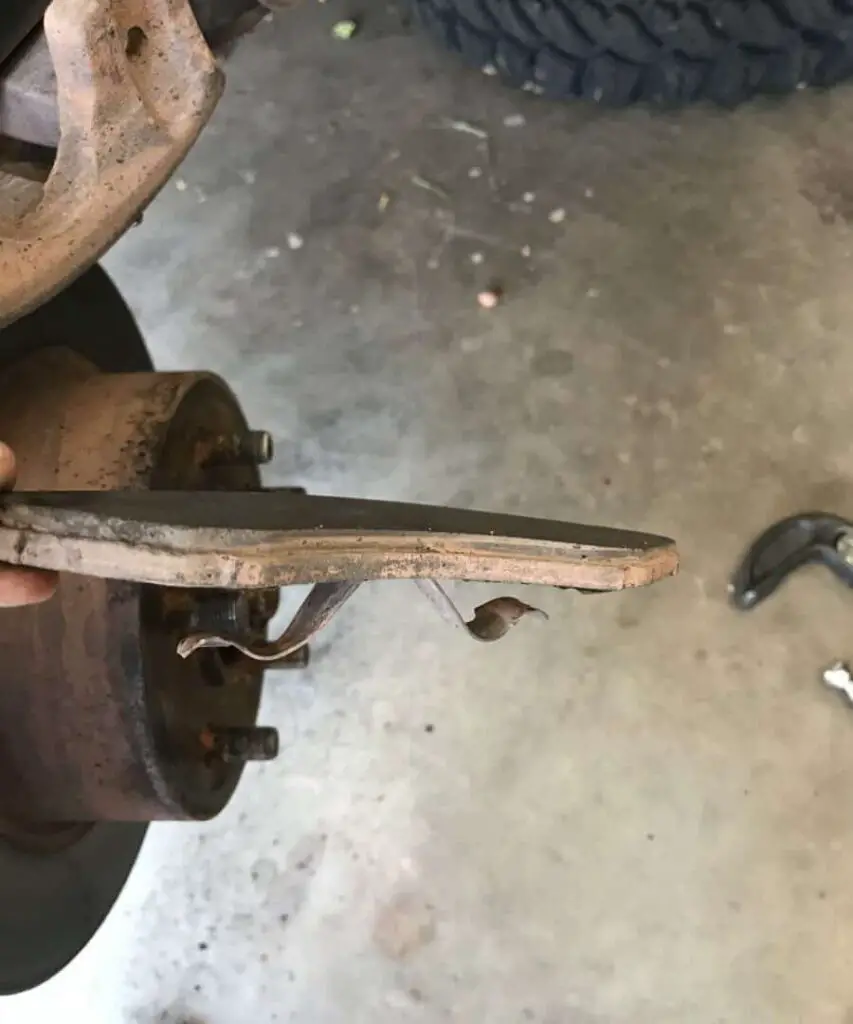
Old Brake Pad 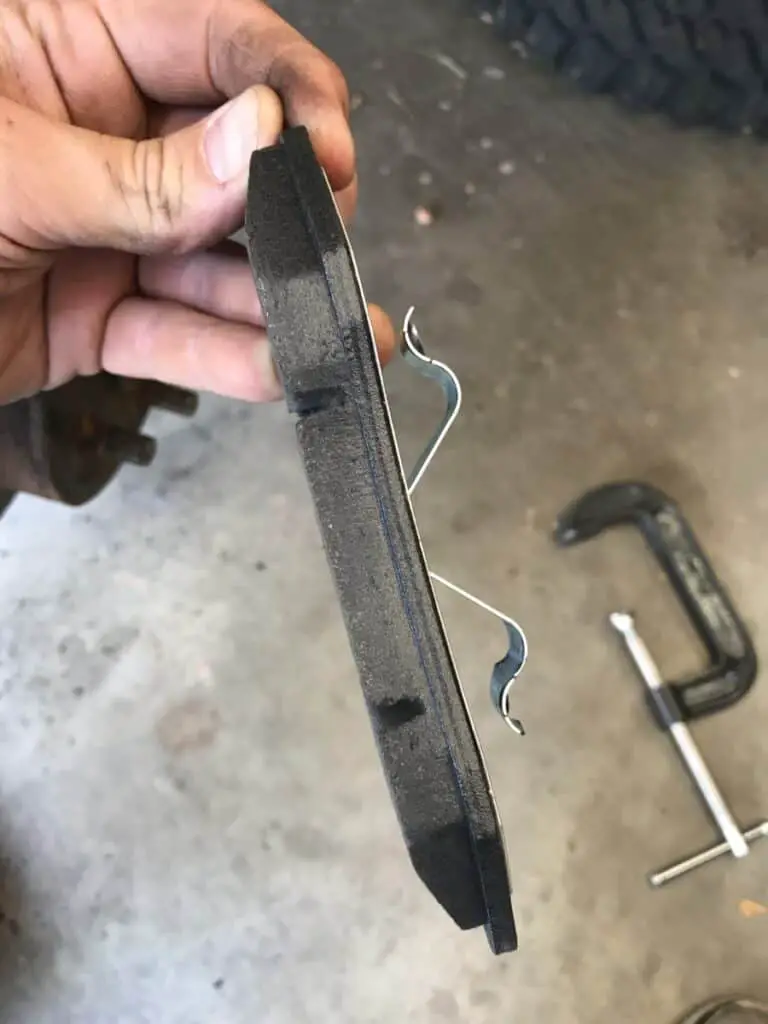
New Brake Pad
After you have tested the engine, acceleration, and brakes on the used Jeep, it is time to move on to the other features available while driving. Both interior and exterior features should be tested to make sure everything is working properly.
Test Other Performance Features
To continue testing the other performance features on your used Jeep, look at the owner’s manual. This will be your guide to carrying out these checks without damaging the vehicle by accident.
Take a look at the following items and how they perform before you consider buying a used Jeep:
- Four-wheel drive in low and high gears
- Cruise control
- Lights
- Lockers, if equipped
- Wheel alignment
- Any aftermarket additions, like additional lights or a winch
Check The Interior and Its’ Features, Too
You want to make sure every part of your used vehicle is in working order. Check for sticking buttons and burnt out lights. There are a host of other features your used Jeep may have. It is important to consider how all of these interior features perform.
Is the interior in general in good shape or are seats torn or overly worn?
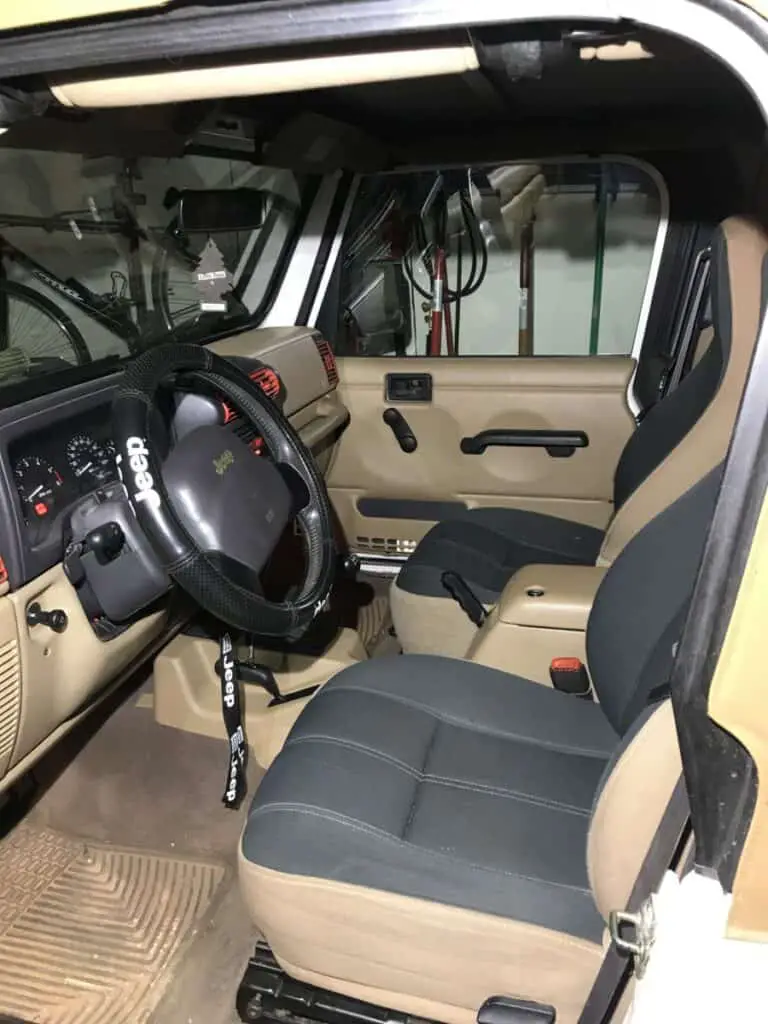
Take a look at the following interior features and their performance before you consider buying a used Jeep:
- Automatic mirrors and sensors
- Back-up camera
- Bluetooth connectivity
- Heat, air conditioning, and defrost settings
- Heated seats
- Interior lights
- Locks
- Power seats
- Power windows
- Radio
- Seat belts
- Touchscreen dashboard
- Windshield wipers
Nowadays, the inside of the car has just as many bells and whistles as the exterior, if not more. Quickly run down each of these items on the checklist to make sure you do not forget to check an important feature.
Check For Recent And Past Recalls
Once all of your preliminary interior and exterior performance and appearance checks are done, it is time to move on to the less tangible things. If you are buying a used Jeep, check for any recalls on that car.
A history of recalls on a specific model can be a red flag, especially if the previous owner did not care for the vehicle. Cars dot com has a great search engine for finding any recalls on a particular make and model.
A recall indicates there is an issue with a part or feature of the car. Ask for documentation if the Jeep has been serviced recently to fix any problems highlighted in recalls.
How Do The Skid Plates Look?
The Jeep Wrangler comes equipped with skid plates on most models. Any time Jeeps are used for off-roading, they usually have skid plates, too. If a seller is dishonest about how the vehicle was handled, you may see the first indication of this when looking at the skid plates.
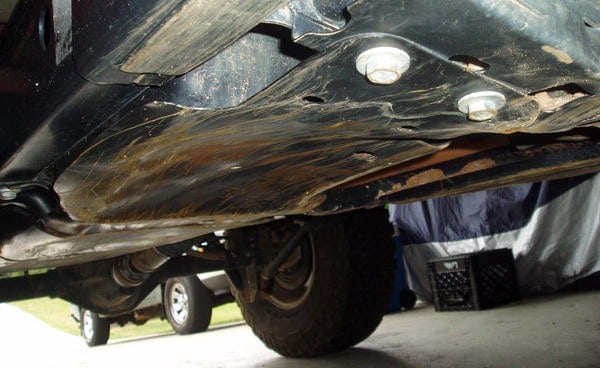
Skid plates come standard on the front and rear of many Jeep models. Some skid plates are also fitted to cover the gas tank. It is relatively easy to check for damage on these plates. Look for signs of:
- Denting
- Potential replacement
- Scratched paint
Damage to the skid plates is not a big deal, but if the seller is claiming the vehicle has not been off-road, and there is noticeable damage to the skid plates, it is wise to choose a new seller. Dishonestly is not a good sign when purchasing a used vehicle. You do not want to end up buying a lemon from a seller who is not giving you all the facts.
You Can Find A Used Jeep That’s Right for You
No matter what, there is a used Jeep out there that is right for you! As long as you take your time when buying a used Jeep, you will increase your chances of ending up with a vehicle that will last you well into the future.
Follow our 20 point checklist (summarized below) to ensure you choose a Jeep that is well kept and right for you:
- Know your needs.
- Consider the overall cost.
- Look at the mileage.
- Consider the year the Jeep was made.
- Choose a reputable seller.
- Ensure a rot-free undercarriage.
- Verify any modifications are installed properly.
- Check the integrity of the suspension.
- Check the tires.
- Look for rust inside and outside the vehicle.
- Ensure no leaks or tattered hoses.
- Ask about previous maintenance and upkeep.
- Take a test drive.
- Listen to the engine.
- Test the acceleration.
- Test the brakes.
- Test any other performance features.
- Check the interior features, too.
- Check for recent and past recalls.
- Look at the skid plates.
And always remember to keep The Wilderness on YOUR Side!

